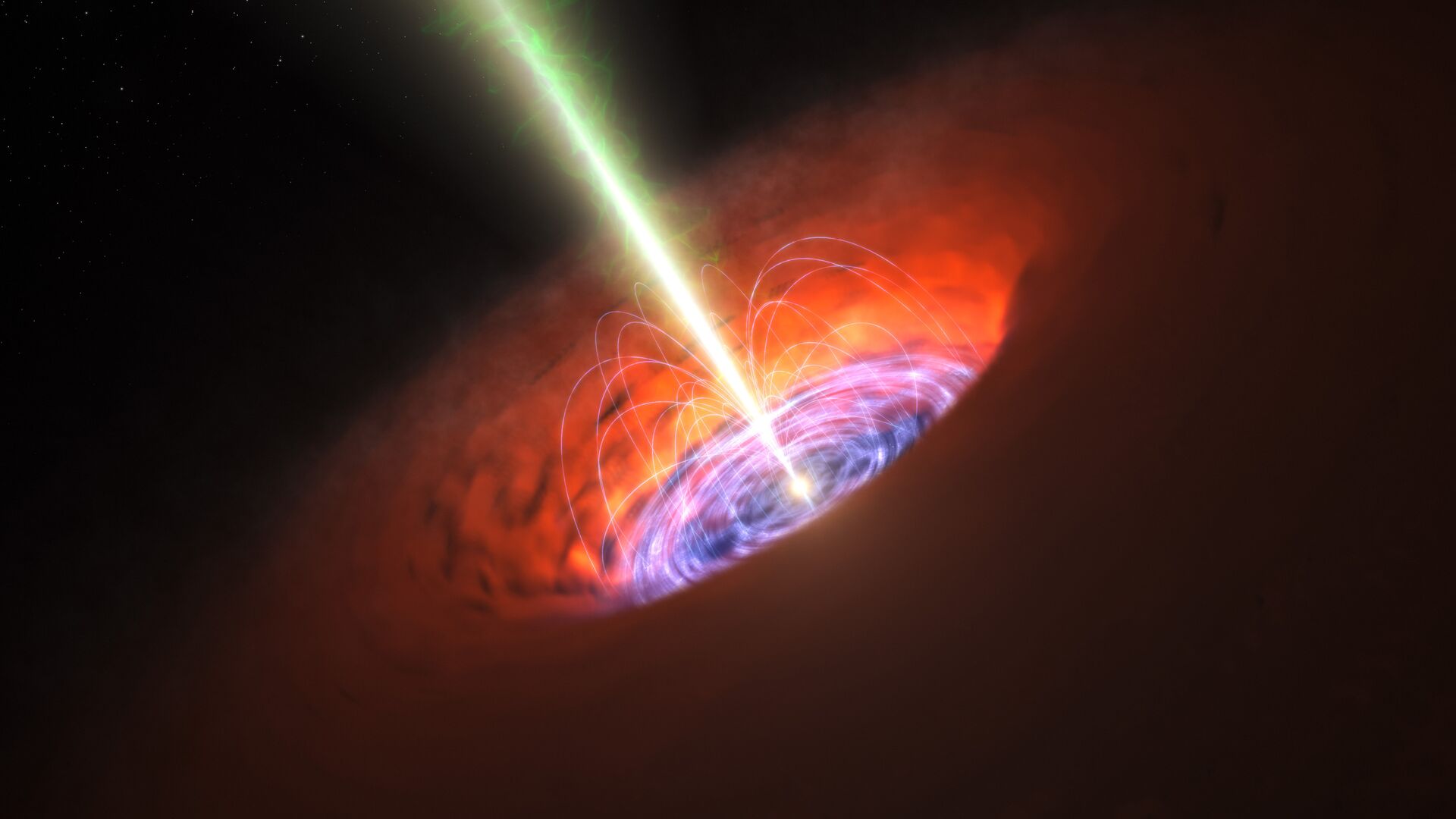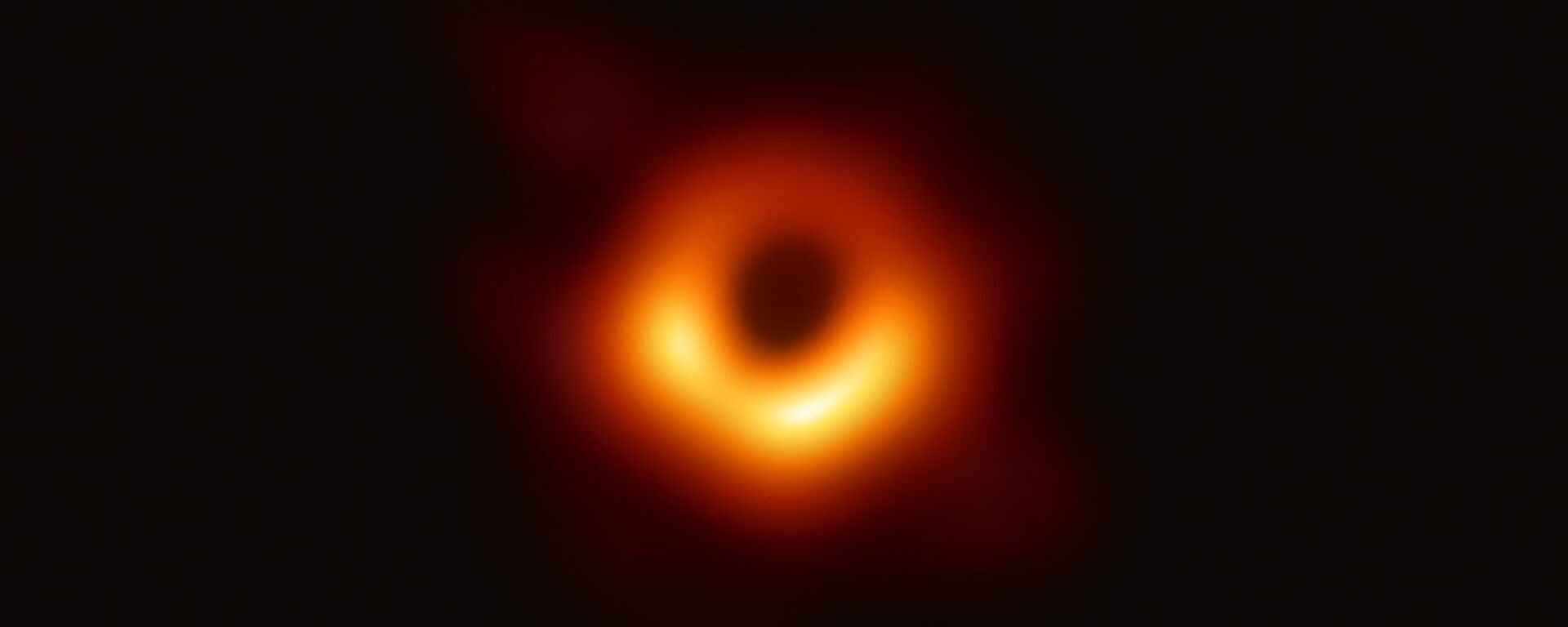https://sputnikglobe.com/20221130/dont-look-up-strange-bright-flash-spotted-by-astronomers-was-black-hole-jet-pointed-at-earth-1104913635.html
Don’t Look Up! Strange Bright Flash Spotted by Astronomers Was Black Hole Jet Pointed at Earth
Don’t Look Up! Strange Bright Flash Spotted by Astronomers Was Black Hole Jet Pointed at Earth
Sputnik International
Despite a lack of firm proof, theoretical physicists have posited that black holes may deposit matter it’s sucked up into a different place via a “wormhole,”... 30.11.2022, Sputnik International
2022-11-30T22:26+0000
2022-11-30T22:26+0000
2022-11-30T22:23+0000
science & tech
astronomy
supermassive black hole
palomar observatory
https://cdn1.img.sputnikglobe.com/img/107390/35/1073903541_0:287:5000:3100_1920x0_80_0_0_07b6a7fdfdb41d8cc6b9df0e06c39eb6.jpg
In a study published in Nature Astronomy on Wednesday, a group of astronomers revealed that a mysterious bright flash observed earlier this year in several telescopes across the planet most likely came from the business end of an ultra-massive black hole called a blazar.In response, scientists from around the globe trained their equipment on the mysterious and powerful new light source in an attempt to deduce its properties.Their explanation? It was a supermassive black hole eating a star.The black hole, designated AT 2022cmc, is about 8.5 billion light-years away, but became visible because of what astronomers call a “tidal disruption event” (TDE), when a star is torn apart by the incredible tidal gravitational forces in and around a black hole.Supermassive black holes often anchor the centers of galaxies, including our own, and the most powerful ones shoot out jets of ionized matter at speeds close to that of light. Astronomers have termed them “blazars,” and when that jet is pointed at the Earth, it looks like one of the brightest objects in the universe.“That tells us they feed very fast, though we don’t know how that feeding process works. So, sources like a TDE can actually be a really good probe for how that process happens,” he noted.To produce such an intense jet, the black hole must be in an extremely active phase — what co-author Research Scientist Dheeraj Pasham describes as a “hyper-feeding frenzy.”“We expect many more of these TDEs in the future,” Lucchini noted. “Then we might be able to say, finally, how exactly black holes launch these extremely powerful jets.”
https://sputnikglobe.com/20210416/new-photos-of-a-black-hole-may-shed-light-on-the-mystery-of-cosmic-rays-new-study-claims-1082645877.html
Sputnik International
feedback@sputniknews.com
+74956456601
MIA „Rosiya Segodnya“
2022
News
en_EN
Sputnik International
feedback@sputniknews.com
+74956456601
MIA „Rosiya Segodnya“
Sputnik International
feedback@sputniknews.com
+74956456601
MIA „Rosiya Segodnya“
science & tech, astronomy, supermassive black hole, palomar observatory
science & tech, astronomy, supermassive black hole, palomar observatory
Don’t Look Up! Strange Bright Flash Spotted by Astronomers Was Black Hole Jet Pointed at Earth
Despite a lack of firm proof, theoretical physicists have posited that black holes may deposit matter it’s sucked up into a different place via a “wormhole,” which might even enable time travel. However, a wormhole has never been observed before.
In a study published in
Nature Astronomy on Wednesday, a group of astronomers revealed that a mysterious bright flash observed earlier this year in several telescopes across the planet most likely came from the business end of an ultra-massive black hole called a blazar.
The sudden bright light was first observed in data from the Palomar Observatory in California, having appeared in a part of the sky where no such light had been observed before. The estimated power of the light was unimaginable, at more than 1 quadrillion times the brightness of our sun.
In response, scientists from around the globe trained their equipment on the mysterious and powerful new light source in an attempt to deduce its properties.
Their explanation? It was a supermassive black hole eating a star.
The black hole, designated
AT 2022cmc, is about 8.5 billion light-years away, but became visible because of what astronomers call a “tidal disruption event” (TDE), when a star is torn apart by the incredible tidal gravitational forces in and around a black hole.
Supermassive black holes often anchor the centers of galaxies, including our own, and the most powerful ones
shoot out jets of ionized matter at speeds close to that of light. Astronomers have termed them “blazars,” and when that jet is pointed at the Earth, it looks like one of the brightest objects in the universe.
“We know there is one supermassive black hole per galaxy, and they formed very quickly in the universe’s first million years,” co-author Matteo Lucchini, a postdoc in the Massachusetts Institute of Technology’s Kavli Institute for Astrophysics and Space Research, said in
a news release.
“That tells us they feed very fast, though we don’t know how that feeding process works. So, sources like a TDE can actually be a really good probe for how that process happens,” he noted.
To produce such an intense jet, the black hole must be in an extremely active phase — what co-author Research Scientist Dheeraj Pasham describes as a “hyper-feeding frenzy.”
“It’s probably swallowing the star at the rate of half the mass of the sun per year,” Pasham said. “A lot of this tidal disruption happens early on, and we were able to catch this event right at the beginning, within one week of the black hole starting to feed on the star.”
“We expect many more of these TDEs in the future,” Lucchini noted. “Then we might be able to say, finally, how exactly black holes launch these extremely powerful jets.”




